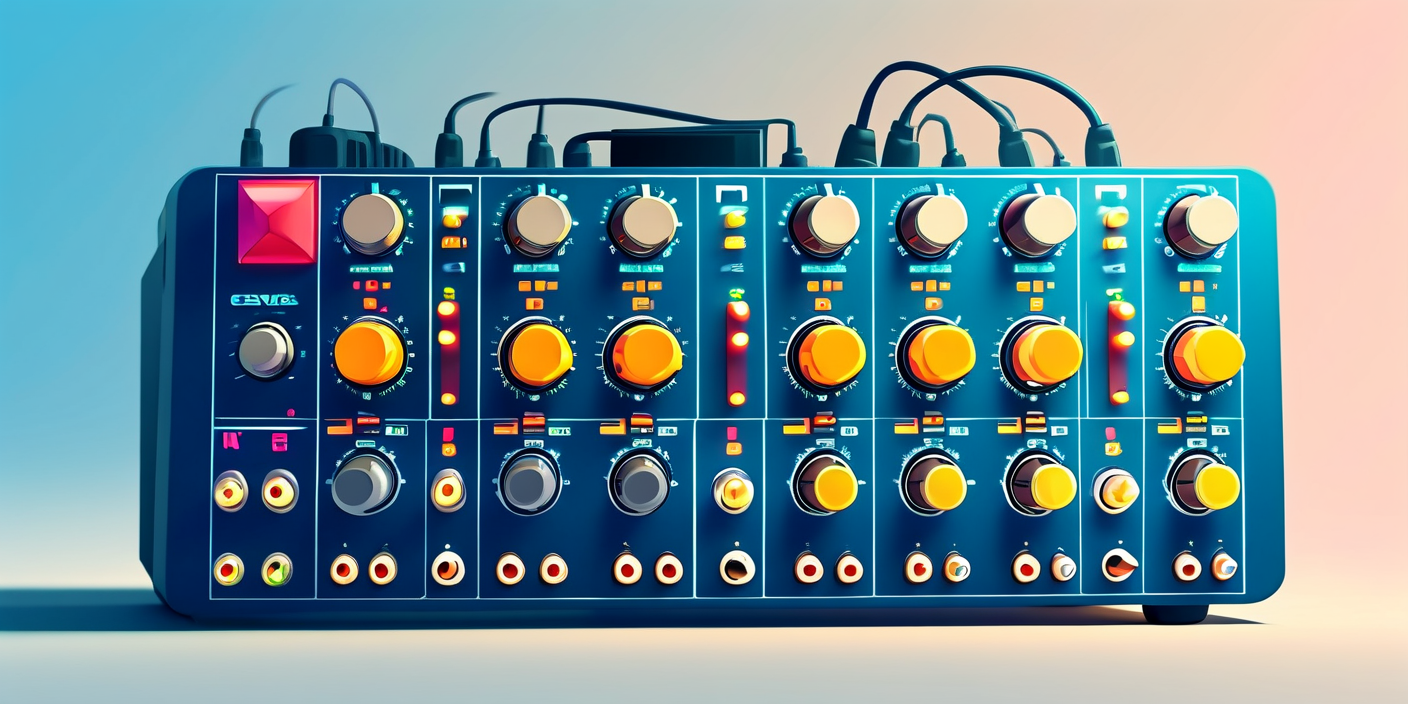Introduction: Understanding Your NXG Audio Mixer
NXG audio mixers, while varying in specific models, often utilize a system of indicator lights to communicate their operational status. A common point of confusion for many users is the meaning of the blue light, often associated with a specific line or channel. This article aims to clarify the significance of the blue light on your NXG audio mixer, exploring various scenarios and providing troubleshooting tips. We’ll delve into the different potential meanings depending on the specific model and context, ensuring you can confidently interpret your mixer’s visual cues.
Decoding the Blue Light: Potential Meanings
The blue light on your NXG audio mixer doesn’t have a single universal meaning. Its interpretation depends heavily on the specific model of the mixer and the context in which the light is illuminated. Let’s explore some common scenarios:
1. Channel Status Indication:
Many NXG mixers use blue lights to indicate the status of individual input channels. A blue light next to a particular channel might signal that:
- Channel is Active/Receiving Signal: The most common meaning. If a channel’s blue light is on, it signifies that the mixer is receiving an audio signal on that specific input channel. This could be from a microphone, instrument, or line-level source.
- Phantom Power Engaged: Some NXG mixers use a blue light to indicate that phantom power is activated for a condenser microphone connected to that channel. Condenser mics require phantom power to operate, so this light is crucial for confirming proper power delivery.
- Channel Selected/Active: In certain models, a blue light could illuminate to show which channel is currently selected or active for adjustments such as volume or EQ.
2. Master Output Status:
A blue light on the master output section of your NXG mixer might indicate that the master output is active and sending an audio signal to your speakers or recording device. This light provides a visual confirmation that your audio is being processed and distributed.
3. Metering and Level Indication:
Some advanced NXG mixers incorporate blue lights as part of their metering system. In this case, the intensity or blinking pattern of the blue light might correspond to the audio signal level. A brighter light could indicate a higher signal level, while a dimmer light signifies a lower level. Consult your mixer’s manual for precise interpretation of the metering system.
4. Internal System Status:
In some instances, a blue light might signal a more general system status, such as the mixer being powered on or connected to a computer via USB. This is less common but possible, depending on the specific model.
Troubleshooting Blue Light Issues
If you’re encountering unexpected behavior with the blue lights on your NXG audio mixer, here are some troubleshooting steps:
1. Consult Your User Manual:
The most reliable source of information is always the official user manual for your specific NXG mixer model. The manual should provide detailed explanations of all indicator lights and their meanings.
2. Check Connections:
Ensure that all cables are securely connected to both the mixer and the input/output devices. Loose connections can lead to erratic behavior and inaccurate light indications.
3. Power Cycle Your Mixer:
Sometimes, a simple power cycle (turning the mixer off and then back on) can resolve temporary glitches or software issues affecting the indicator lights.
4. Inspect Cables and Connections for Damage:
Carefully examine all cables and connections for any signs of physical damage, such as frayed wires or bent pins. Damaged cables can interrupt signal flow and cause incorrect light indications.
5. Verify Input Source:
Make sure that your audio input source (microphone, instrument, etc.) is correctly connected and powered on. An inactive input source will not trigger the blue light on the corresponding channel.
6. Contact NXG Support:
If you’ve exhausted all troubleshooting steps and still can’t resolve the issue, don’t hesitate to contact NXG’s customer support. They can provide specific assistance based on your mixer model and the problem you’re experiencing.
Understanding the Importance of Indicator Lights
The indicator lights on your NXG audio mixer are invaluable tools for monitoring its operational status. Understanding the meaning of these lights is crucial for efficient workflow and troubleshooting. By correctly interpreting the blue light and other indicator lights, you can ensure your audio signals are correctly routed, processed, and delivered.
Advanced Considerations: Different NXG Mixer Models
It’s crucial to remember that the specific meaning of indicator lights, including the blue light, can vary across different NXG audio mixer models. Features and functionalities differ, and therefore, the light indications may not be consistent. Always refer to your specific mixer’s user manual for accurate interpretations.
Final Thoughts: Mastering Your NXG Mixer
Mastering your NXG audio mixer involves understanding its various functionalities and interpreting its indicator lights correctly. The blue light, while seemingly simple, can convey a range of information about your channels, outputs, and overall system status. By following the troubleshooting steps and consulting your user manual, you can effectively use these visual cues to enhance your audio mixing experience.

